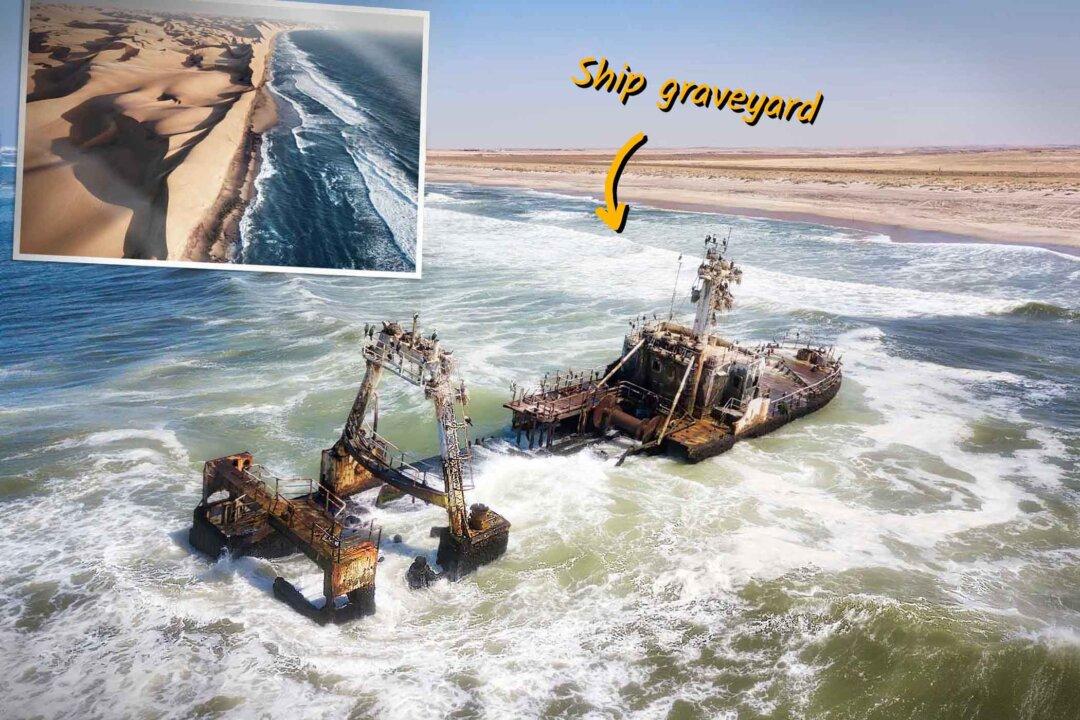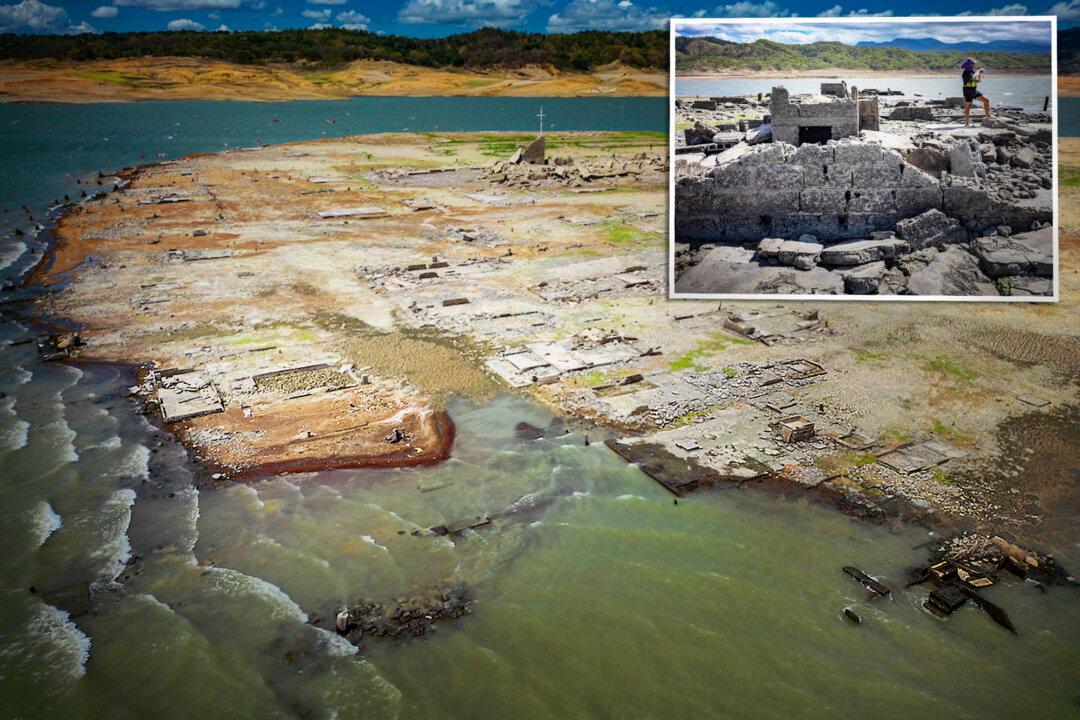Here lies a 16th century Portuguese carrack.
Laid to rest due north? A Japanese fishing vessel that hit sand in 2018.
You are in a ship’s graveyard.
If names mean anything, then one stretch of “macabre” coast along Namibia’s South Atlantic seaboard is nothing short of Hades itself.
The aptly-named Skeleton Coast, with its unpredictable, shifting sands, ranks among the most inhospitable and remote regions on Earth. To paint a picture: scattered everywhere are the bones of marine mammals from whale hunting—alongside them lie the decomposing hulls of hundreds of shipwrecked vessels.
But despite the scary name, life persists and even thrives here. This most unique biome plays host to the rare desert lion, brown and spotted hyenas, black rhinos, giraffes, baboons, and elephants—and all are particularly well adapted to the climate where the coast and Namib Desert converge. Farther inland there are gemsbok and springbok, leopards, cheetahs, and pink flamingos.
Looking southwestward, a place called Cape Cross is where a colony of Cape fur seals resides, numbering in the hundreds of thousands. Their impressiveness in numbers is rivaled only by their powerful smell.




So, do any humans mingle here, in this lonely region?
Yes, though not too many. Surfers actually fly in to ride the highly energized coastal currents fed from the Antarctic; it’s become a reason for extreme-minded surfers to visit Namibia. But perhaps most notably, the skeletal detritus of ships strewn along the harsh coastline have made it a magnet for shipwreck enthusiasts and explorers.
In this strange land, where exotic animals live on white-sand beaches that almost look like the Caribbean, and shipwrecks rest atop sand dunes, you'd be forgiven for thinking you were dreaming.
The abridged version of your guide to enjoying the surreal wrecks, and other attractions, at the Skeleton Coast goes something like this:
If wreck hunting, surfing, or fishing in Namibia sound appealing, the authorities want you to seek out a guide. It makes good sense. There are tides and ever-shifting sands to contend with, making those rusting hulls tricky to find. Terrifyingly high dunes and treacherous salt pans make having a four-by-four handy. A guide will help you navigate through.
The company says it specializes in “taking you to some of the most remote places on the African continent.”





The Skeleton Coast extends from the Kunene River near Angola, on Namibia’s northern border, southward to the Swakop River, which flows into the ocean at the German colonial town of Swakopmund. It covers 6,200 square miles and encompasses Skeleton Coast National Park.
Off the northern part of the coastline is where one of the area’s most noteworthy ships, the Dunedin Star, ran aground in 1942. And from this ship the Skeleton Coast got its name; her sinking was chronicled by author John Henry in his book of the same name, published in 1944.
But before trekking off in search of the Dunedin Star—or other significant wrecks in the north, such as Barge 77—acquiring a guide could literally mean the difference between life and death.
There are diamond mines that are off-limits here, and intruders face the risk of being shot. That’s one reason why Namibia is divided into “concessions” where selected tour companies take visitors to specific sites on request.
“Concession permits fees are paid into transparent community trust accounts and are managed by the native communities of that specific region,” states Wild Space Adventure Safaris, one such selected outfit. “This way you are investing in and supporting the future of Africa.”
While making your way through regions rich in gemstones, though, you might spot a company escort on your tail.



If armed escorts aren’t your thing, there are said to be over a thousand vessels of various sizes along this inhospitable coastline; surely some are more tourist-friendly.
As for what’s to blame for those hundreds of wrecks, it is said that offshore rocks and the upwelling of the cold Benguela current, which gives rise to dense ocean fog, are causes. The Skeleton Coast appears to live up to its name—but also the name given to it by the indigenous San people: The Land God Made in Anger. Portuguese sailors called it the Gates of Hell.
Partially buried in sand, the hull of Eduard Bohlen can be found about 350 yards off the shore of Walvis Bay, south of Swakopmund. You can wait for low tide and go take a gander. As with other wrecks, the shifting sands surrounding the Eduard Bohlen play tricks on the mind: “How did this rusted behemoth get so far inland?” one might wonder.
There are similarly puzzling wrecks, like the Arkona, which can only be reached by crossing sand dunes that are hundreds of feet high.
Other notable wrecks include the Benguela Eagle, Otavi, and Tong Taw. Sometimes there’s not much left. You can find only a few bits of wood and scrap metal. An ancient engine block may emerge from the sand today only to be covered over tomorrow.




By far the oldest ship to meet its watery grave here is the Bom Jesus, a Portuguese vessel that ran aground near Oranjemund in the 1530s.
The most recent to go under is the registered Japanese fishing ship MVF Fukuseki Maru, which sank on March 22, 2018. All 24 crewmembers were safely rescued by Namibian authorities.
It is thanks to the scant number of locals who run the fishing charters, surfing adventures, safaris, and guided ship tours that visitors can enjoy this beautiful but deadly stretch of coastline. Outfits such as Wild Space Adventure Safaris can help plan your itinerary. Besides all the above, there are chances to kayak with the seals and drive dune buggies through surreal desertscapes.
If you’re seeking escape, this is probably the closest thing you'll find to reaching the end of the Earth.








